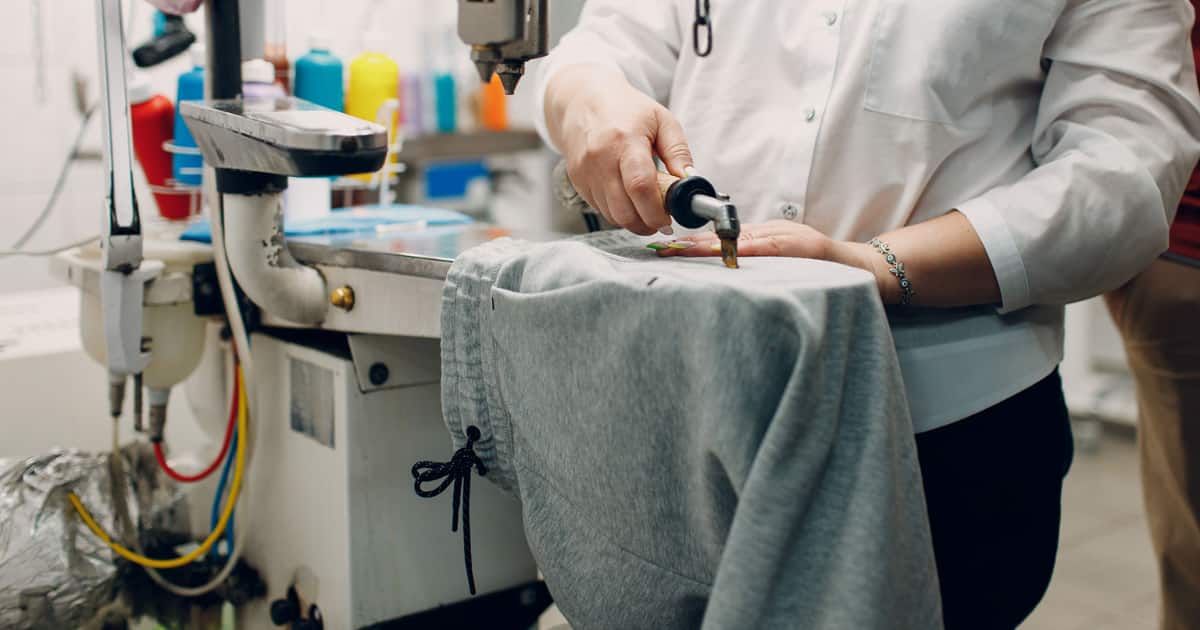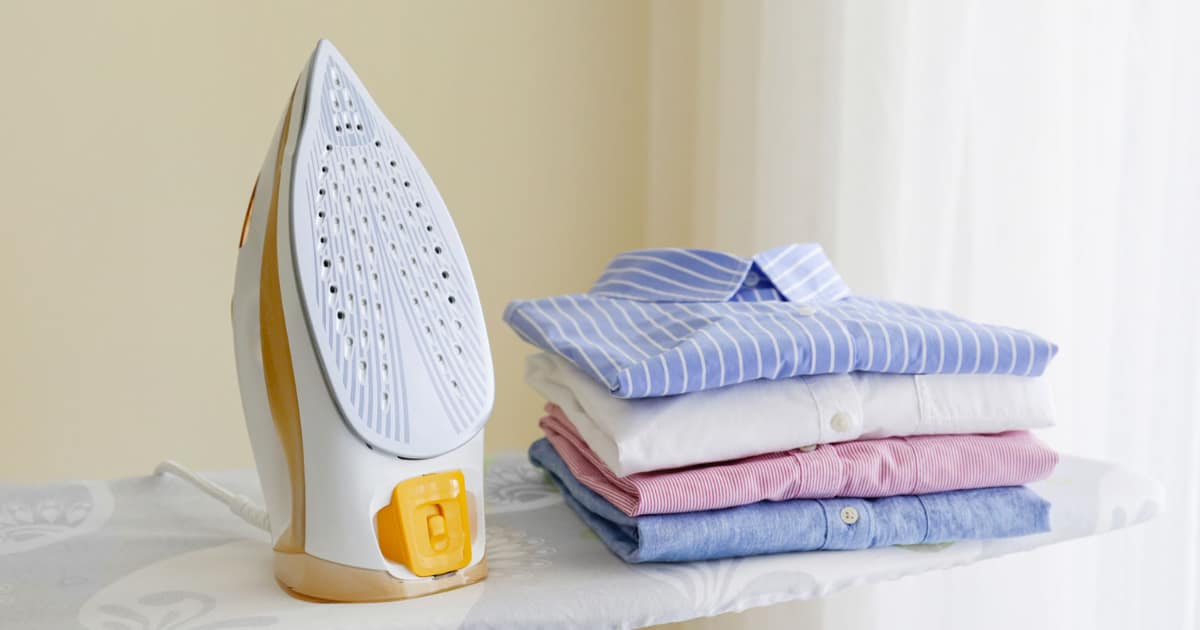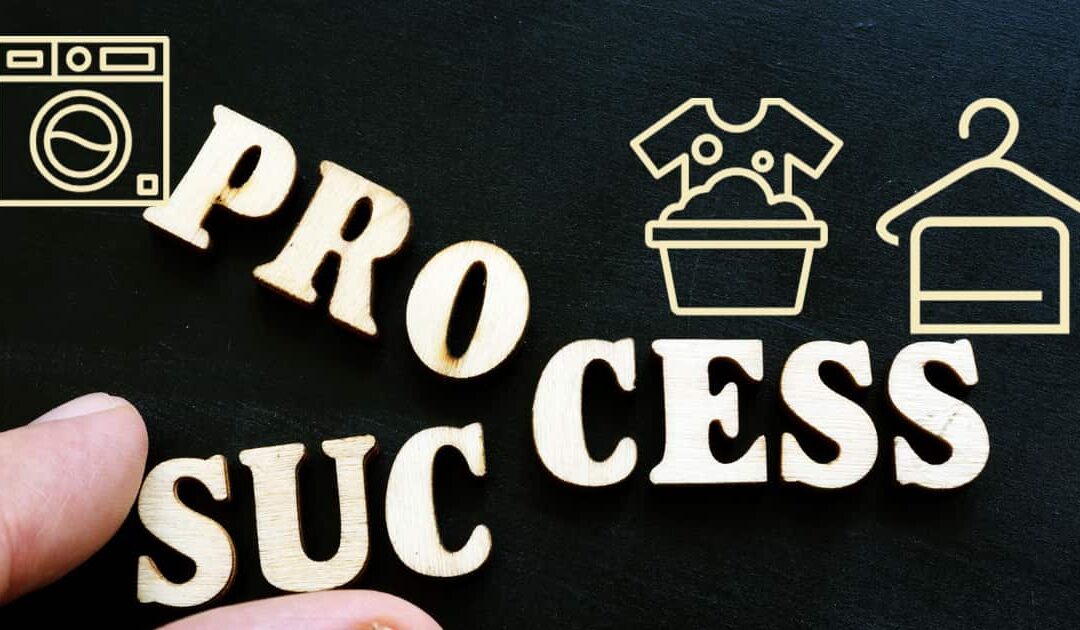Actual Laundry Process for Dry Cleaning
Running a successful dry cleaning business requires more than just a basic understanding of how to remove stains from clothing.
It requires a deep dive into the world of laundry processes, a world filled with techniques, chemicals, and expert tips that can transform your business and increase your customer reach.
Now that you have a deep understanding of the laundry process, you might be wondering how to leverage this knowledge to grow your business.
The answer lies in effectively communicating your expertise to your customers and providing exceptional service that sets you apart from the competition.
But how do you reach more customers? How do you let them know about the superior laundry services you offer? This is where digital marketing comes into play.
With the right strategies, you can increase the visibility of your laundry business online and attract more customers.
From optimizing your website for search engines to using social media to connect with your local community, digital marketing offers a wealth of opportunities.
But it can be complex and time-consuming. That’s where we come in. We are experts in digital marketing for laundry businesses, and we can help you reach your goals.
In this article, we’ll uncover the actual laundry process and provide you with the knowledge you need to take your dry cleaning business to the next level.
Table of Contents
- Mastering Laundry Sorting
- Perfecting Laundry Washing
- Techniques for Laundry Drying
- The Art of Laundry Pressing
- Understanding Laundry Ironing
- The Role of Starching in Laundry
- Laundry Alteration for Perfect Fit
- Laundry Restoration: A Special Skill
- Conclusion: Perfecting Your Laundry Process
1. Introduction to Laundry Process
Before we delve into the specifics, it’s important to understand what we mean by the “laundry process”.
This term refers to the entire journey a garment takes from being dirty to clean, pressed, and ready to wear.
It’s a journey that involves sorting, washing, drying, pressing, ironing, starching, mending, altering, and even restoring. Each of these steps is a crucial part of the process, and understanding them in detail can give your business the edge it needs.
1.1 Importance of Understanding Laundry Process
Why is it so important to understand the laundry process? Because knowledge is power. The more you know about the process, the better you can serve your customers.
You’ll be able to handle a wider range of fabrics and stains, offer more services, and provide better results.
This can lead to increased customer satisfaction, repeat business, and positive word-of-mouth, all of which can boost your business’s visibility and reach.
1.2 Overview of Laundry Process Steps
So what are the steps in the laundry process? Here’s a quick overview:
- Sorting: This involves separating clothes by color, fabric type, and care instructions to prevent damage and color bleeding.
- Washing: This is where the actual cleaning happens, using water, detergent, and mechanical action.
- Drying: After washing, clothes are dried using air drying or tumble drying techniques.
- Pressing and Ironing: These steps remove wrinkles and give clothes a neat, finished look.
- Starching: This optional step can give clothes extra body and crispness.
- Mending and Altering: These services can repair damage and adjust the fit of clothes.
- Restoring: This involves special techniques to restore vintage or damaged clothes.
Each of these steps has its own techniques and considerations, which we’ll explore in the following sections.
2. Mastering Laundry Sorting
One of the first steps in the laundry process is sorting. This crucial step can make the difference between a successful wash and a disaster. Let’s explore the key aspects of laundry sorting.
2.1 Color Groups in Laundry Process
Sorting clothes by color is a fundamental part of the laundry process. It prevents colors from bleeding onto each other during the wash.
Typically, clothes are sorted into three main color groups: whites, lights, and darks. Whites should always be washed separately to maintain their brightness.
Light colors like pastels and grays can be washed together. Darks, including blacks, blues, and browns, make up the final group.
2.2 Fabric Types and Laundry Sorting
Sorting doesn’t stop at colors. It’s also important to consider fabric types. Delicate fabrics like silk and lace should be separated from heavier materials like denim.
This prevents damage and ensures that each fabric type gets the care it needs. Remember, different fabrics have different washing requirements, so sorting by fabric type can help you customize the wash cycle for each load.
2.3 Care Labels and Sorting
Finally, always pay attention to care labels. These labels provide important information about how to wash, dry, and iron each garment.
Some items may require special care, like hand washing or dry cleaning. Sorting these items out before you start the wash can save you from potential laundry disasters.
3. Perfecting Laundry Washing
Once your clothes are sorted, it’s time to move on to the next step in the laundry process: washing. This step is where the actual cleaning happens. Let’s look at how to perfect this process.
3.1 Choosing the Right Detergent
The detergent you choose plays a significant role in the effectiveness of your wash. There are many types of detergent on the market, including liquid, powder, and pods.
Each has its own strengths and is suited to different types of washes. For example, liquid detergent is great for pre-treating stains, while powder detergent is often cheaper and can be more effective for muddy clothes.
3.2 Machine vs Hand Washing
Not all clothes are suited to machine washing. Delicate items, or those with special care instructions, may need to be washed by hand.
Hand washing is gentler on clothes and can prolong the life of delicate fabrics. For items that are machine washable, be sure to select the right cycle. Most washing machines offer a variety of settings for different fabric types and levels of dirtiness.
3.3 Effective Stain Removal Techniques
Stains can be a laundry nightmare, but with the right techniques, they don’t have to be. Pre-treating stains before washing can be very effective.
This involves applying a small amount of detergent directly to the stain and gently rubbing it in. For stubborn oil stains, there are a variety of stain removal products available. Remember, the sooner you treat a stain, the better chance you have of removing it.

4. Techniques for Laundry Drying
Once your clothes are clean, the next step in the laundry process is drying. This step is crucial for maintaining the quality and longevity of your clothes. Let’s delve into the different techniques for laundry drying.
4.1 Guide to Line and Flat Drying
Line drying is a traditional method that uses the heat of the sun and the natural flow of air to dry clothes. It’s energy-efficient and gentle on clothes.
However, it’s not suitable for all types of clothes and weather conditions. Flat drying, on the other hand, is perfect for delicate items that may stretch or shrink.
It involves laying clothes flat on a towel and allowing them to air dry.
4.2 Tumble Drying: Temperature and Shrinkage
Tumble drying is a common method that uses heat and motion to dry clothes quickly. However, it’s important to use the right temperature to prevent shrinkage and damage.
Most dryers have settings for different fabric types and levels of dryness. Always check the care labels on your clothes before tumble drying.
4.3 Drying Delicate Items
Delicate items require special care when drying. Many delicate fabrics can’t withstand the heat and tumbling of a dryer and should be air-dried instead.
If you’re unsure, always check the care label. Remember, taking the time to dry your clothes properly can keep them looking their best for longer.
5. The Art of Laundry Pressing
Pressing is the final step in the laundry process. It gives your clothes a crisp, professional look. But it’s not just about aesthetics – pressing also helps to kill any remaining germs. Let’s explore the art of laundry pressing.
5.1 Ironing: Temperature and Techniques
Ironing is a common method of pressing clothes. The key to successful ironing is using the right temperature for each fabric type. Most irons have settings for different fabrics, from delicate silks to sturdy cottons.
Using the right technique can also make a big difference. For example, ironing in long, straight strokes can give better results than short, back-and-forth movements.
5.2 Using a Garment Steamer
A garment steamer is another tool you can use for pressing clothes. It uses hot steam to remove wrinkles and can be especially useful for delicate items and clothes with intricate details. However, it requires a bit of practice to use effectively.
5.3 Press Machine Operation and Safety
For a professional finish, you might consider using a press machine. These machines use heat and pressure to press clothes, giving them a crisp, clean look.
However, they can be dangerous if not used correctly, so always follow the manufacturer’s instructions and safety guidelines.

6. Understanding Laundry Ironing
Ironing is an integral part of the laundry process. It not only makes your clothes look neat and well-kept, but it also helps to kill any remaining germs. Let’s delve into the details of laundry ironing.
6.1 Adjusting Iron Temperature
The temperature of your iron can make or break your ironing process. Too hot, and you risk burning or scorching your clothes.
Too cool, and you won’t effectively remove wrinkles. Most irons have a range of temperature settings to suit different fabric types.
Always check the care label on your clothes to find the recommended ironing temperature.
6.2 Ironing Different Fabric Types
Different fabrics require different ironing techniques. For instance, cotton and linen can withstand high temperatures, while silk and wool require a cooler setting.
Synthetic fabrics are particularly sensitive to heat and should be ironed on a low setting. Always iron clothes on the reverse side to prevent shiny marks.
6.3 Choosing and Maintaining Ironing Boards
The right ironing board can make your ironing process smoother and more efficient. Choose a board with adjustable height and a cover that reflects heat.
To maintain your ironing board, replace the cover when it becomes worn and ensure the board is always clean and dry before ironing.
7. The Role of Starching in Laundry
Starching is a traditional laundry technique that adds stiffness and body to clothes.
While not necessary for all garments, it can give a crisp finish to shirts, table linens, and other items. Let’s explore the role of starching in laundry.
7.1 Using Liquid and Spray Starch
Starch comes in two main forms: liquid and spray. Liquid starch is mixed with water and added to the rinse cycle of your wash.
Spray starch is applied directly to clothes before ironing. Both types can give your clothes a crisp, neat appearance.
7.2 Applying Starch: Tips and Tricks
When applying starch, less is more. Start with a light application and add more if needed. Spray starch should be applied evenly from a distance of about 8 to 10 inches.
Always allow the starch to penetrate the fabric before ironing.
7.3 Exploring Starch Alternatives
If you prefer a more natural approach, there are several alternatives to commercial starch. One option is to make your own starch using cornstarch and water. Vinegar can also be used as a natural fabric softener and wrinkle releaser.
Download Your Free
Digital Marketing Plan Template
Build a practical, strategic marketing plan that generates more web traffic, leads and Conversions. Reach Your Target Audience Where They Are and Drive Sales Like Never Before
8. Laundry Alteration for Perfect Fit
Alteration is a valuable service that can set your laundry business apart. By adjusting the fit of clothes, you can provide a personalized service that goes beyond the standard laundry process. Let’s explore the key aspects of laundry alteration.
8.1 Hemming Techniques in Laundry Process
Hemming is a common alteration that involves adjusting the length of clothes. This can be done by hand or with a sewing machine.
The technique you choose depends on the type of fabric and the desired finish. For a professional look, it’s important to measure carefully and use the right tools.
8.2 Altering for Size and Shape
Altering clothes for size and shape can involve a variety of techniques, from taking in seams to adding darts.
This service can be a lifesaver for customers who have clothes that don’t fit quite right. By offering alterations, you can help your customers look their best and feel more comfortable in their clothes.
8.3 Adjusting Straps and Sleeves
Adjusting the length of straps and sleeves is another common alteration. This can involve shortening or lengthening straps, or adjusting the length of sleeves.
Like other alterations, this service requires careful measurement and precision sewing.
9. Laundry Restoration: A Special Skill
Restoration is a specialized skill in the laundry process that involves bringing old or damaged clothes back to life.
This can be a rewarding service that helps preserve cherished items. Let’s delve into the world of laundry restoration.
9.1 Vintage Clothing and Heirloom Textiles
Restoring vintage clothing and heirloom textiles requires a gentle touch and a deep understanding of fabrics.
These items are often delicate and require special care to preserve their unique qualities. This can involve careful cleaning, mending, and sometimes even recreating parts of the garment.
9.2 Cleaning and Repairing Restorations
Restoration often involves cleaning and repairing items. This can be a complex process that requires a range of skills, from stain removal to sewing.
The goal is to restore the item to its original condition, or as close as possible.
9.3 Disaster Recovery for Textiles
Disaster recovery is a specialized area of restoration that involves salvaging textiles after a fire, flood, or other disaster.
This can be a challenging and emotional task, but it can also be incredibly rewarding. With the right techniques, it’s often possible to save items that seemed beyond repair.
By now, you’ve gained a wealth of knowledge about the laundry process and the potential of digital marketing. You’re ready to take your laundry business to the next level. But you don’t have to do it alone.
We understand the unique challenges and opportunities of marketing a laundry business.
We have the expertise to help you navigate the digital landscape and reach more customers.
Whether you’re a small local laundry service or a growing franchise, we can tailor a digital marketing strategy to your specific needs.
Don’t let the complexities of digital marketing hold you back. Reach out to us today and let’s start growing your laundry business together.
You can reach our digital marketing professional on Mobile +91 9704036936. We’re looking forward to helping you transform your laundry process into a powerful marketing tool.
Conclusion: Perfecting Your Laundry Process
As we’ve journeyed through the intricate world of the laundry process, it’s clear that each step, from sorting to restoration, plays a crucial role in delivering high-quality service.
Perfecting your laundry process is not just about cleaning clothes; it’s about providing a service that values your customers’ garments as much as they do.
Recap of Laundry Process Steps
We’ve delved into the details of sorting, washing, drying, pressing, ironing, starching, altering, and restoring laundry. Each of these steps requires a unique set of skills and knowledge. By mastering these, you can ensure that your laundry service stands out in the market.
The Impact of a Good Laundry Process
A well-executed laundry process can significantly impact your business. It can lead to satisfied customers, repeat business, and positive word-of-mouth referrals.
But more than that, it can transform your laundry service from a simple necessity into a valued part of your customers’ lives.
Remember, the journey doesn’t stop here. There’s always room for improvement and innovation. So, keep exploring, keep learning, and keep striving to perfect your laundry process.
Promote Your Laundry Business Online with Proven Online Marketing Strategies!
Unlock the Secrets of Google Ranking Optimization Strategies , Fast-Track Your Laundry Business Success with Mastermind Mr. Ram
Related Articles
How AI Marketing Can Transform Your Laundry and Dry Cleaning Business
How AI Can Help Your Local Laundry Business Grow — Even If You’re Just Starting Out
Have you ever wished your laundry or dry cleaning business could run smoother, faster, and smarter? Good news — it can! And you don’t need to be a...
1-Click AI Agent for SEO Competitor Analysis: Laundry, Dry clean Business
Who Are Your Real Competitors Online? Let’s Find Out in Seconds Ever wonder why some local laundry or dry cleaning businesses show up first on Google...
Mastering Prompt Engineering: A Beginner-Friendly Guide to Agentic AI Workflows
How Smart AI Prompts Can Help You Outshine Competing Laundry Services Running a laundry or dry clean business is no easy job. You're juggling...
Boost your Website Ranking with Best Google SGE Optimization Services
As Google shifts towards AI-powered search results with its Search Generative Experience (SGE), the way businesses rank online is changing. No longer...
Boost Your Laundry and Dry Clean Service Website’s Visibility with Schema Markup
Running a laundry and dry cleaning service in today’s fast-paced digital world is about more than just offering great service and competitive pricing....

